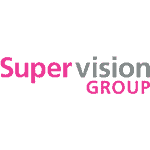As the new financial year begins, it’s the perfect time for businesses to review more than just their numbers. Your technology stack or the combination of software tools you use to run your business plays a critical role in efficiency, compliance, and long-term growth.
If your systems are disconnected, outdated, or causing manual double-handling, it may be time to reassess and upgrade.
Why Tech Stack Reviews Matter Post-EOFY
The end of financial year reporting often reveals where processes break down. Are you spending too much time reconciling spreadsheets? Struggling with late BAS lodgements due to scattered records? Missing data insights for decision-making? These are all signs that your tech stack is either underperforming or misaligned with your business needs.
A modern, integrated system doesn’t just save time. It empowers your team with better data, improves cash flow visibility, and helps you stay compliant with the ATO’s increasing digital focus.
Key Components of a Smarter Tech Stack
- Cloud Accounting Platforms
Solutions like Xero, MYOB, or QuickBooks Online are no longer optional—they’re essential. Real-time access, seamless bank feeds, automated invoicing, and secure document storage allow businesses to manage finances from anywhere. - Integrated Payroll and STP Compliance
Ensure your payroll software is fully compliant with Single Touch Payroll (STP) Phase 2 requirements. Automating superannuation payments, leave tracking, and payslip generation reduces errors and avoids ATO penalties. - Connected CRMs and Inventory Systems
For product-based or service businesses, integrating customer relationship management (CRM) tools with your accounting platform improves sales forecasting and client communication. For retailers and wholesalers, stock management tools like DEAR Inventory or Cin7 keep supply chains running smoothly. - Digital Receipt Capture and Expense Management
Apps like Hubdoc or Dext streamline bookkeeping by scanning and coding receipts automatically. This not only saves time but ensures accurate audit trails for ATO reviews. - Job and Project Management Tools
For trades, consultants, and agencies, platforms like WorkflowMax, ServiceM8, or Asana ensure time tracking, quotes, and job costs are managed centrally. Linking these tools with your accounting platform improves profitability insights. - Cybersecurity and Backup
As you become more reliant on digital tools, ensure you have multi-factor authentication, secure cloud backups, and regular security audits in place. Compliance is not just about tax; it includes data privacy and business continuity too.
Questions to Ask in Your Mid-Year Tech Review
- Are all your systems integrated, or do you still rely on manual entry?
- Are you getting meaningful reports and insights from your tools?
- Is your team trained and confident using your current software?
- Are you compliant with the latest ATO and Fair Work requirements?
- Are you paying for software you no longer use?
Final Thoughts
The right tech stack is an investment in your business’s future. When your systems work together, your business runs more smoothly, your reporting is more accurate, and your advisors can give you better insights.





